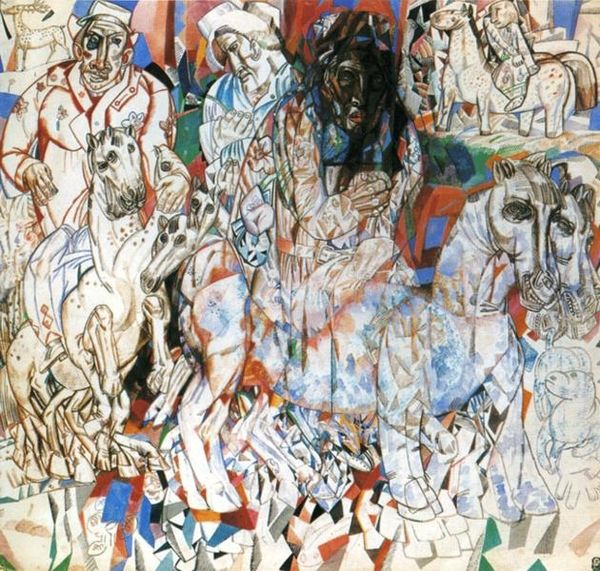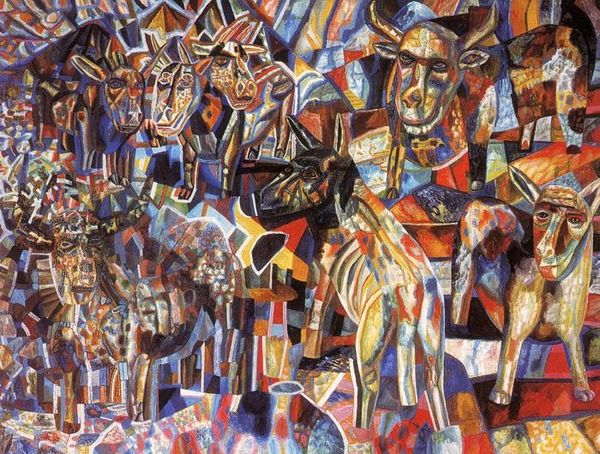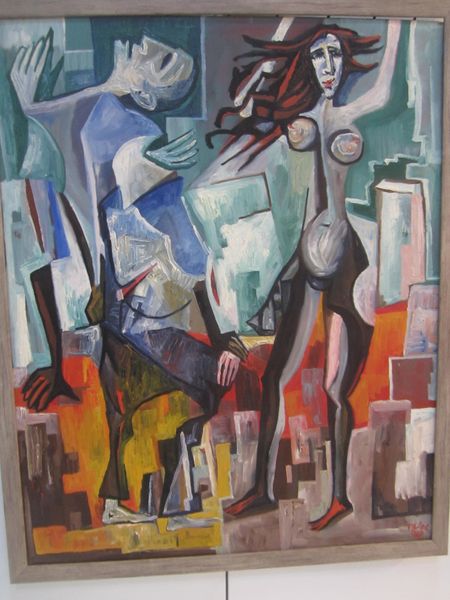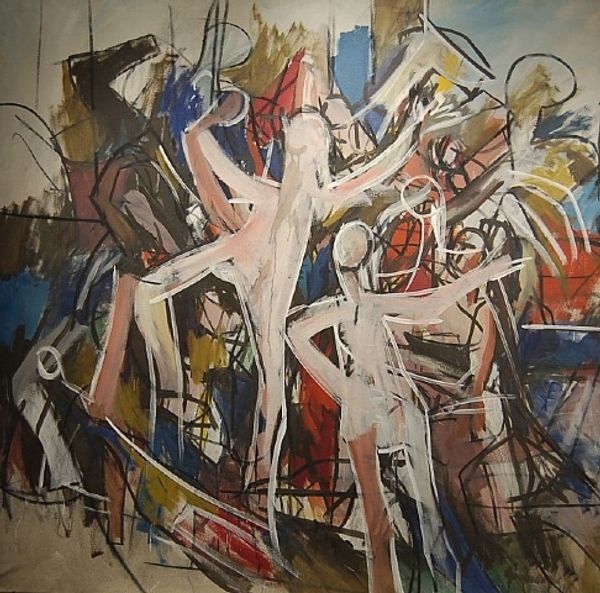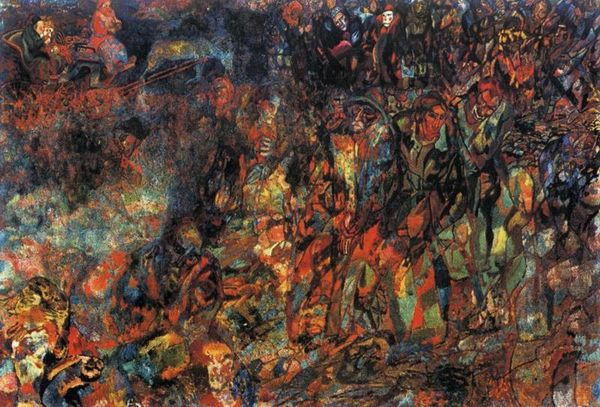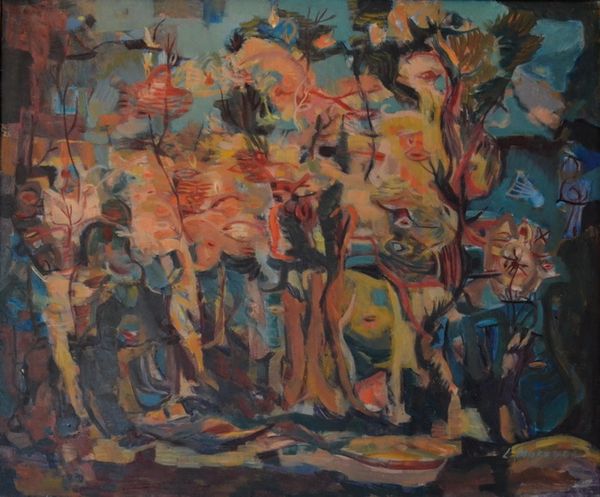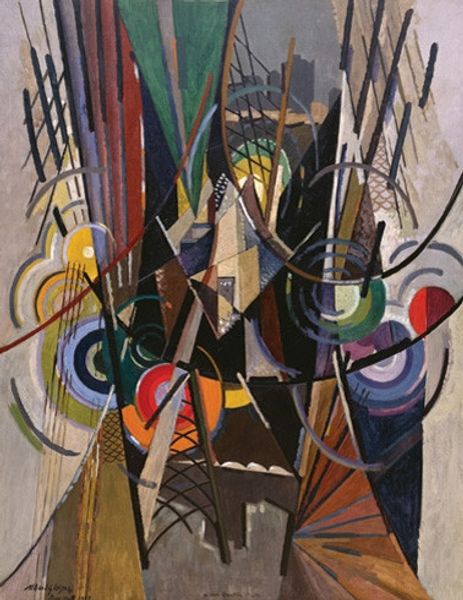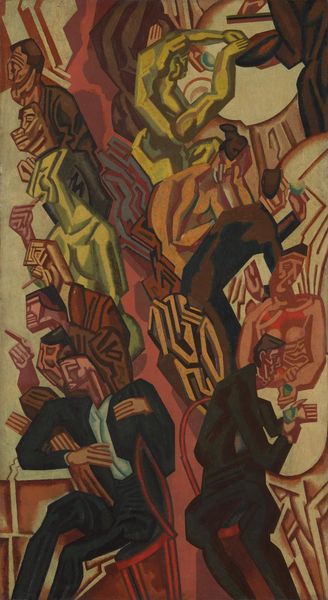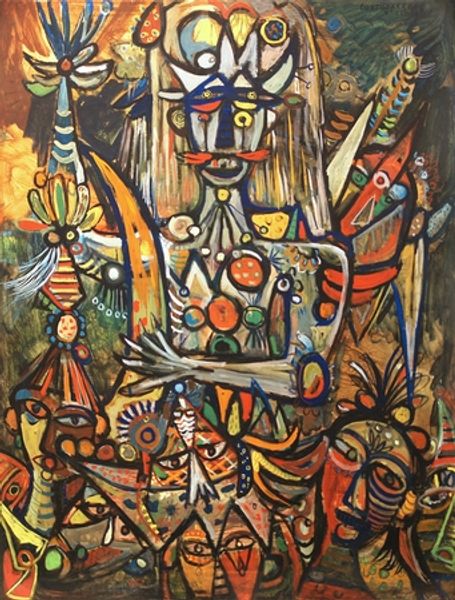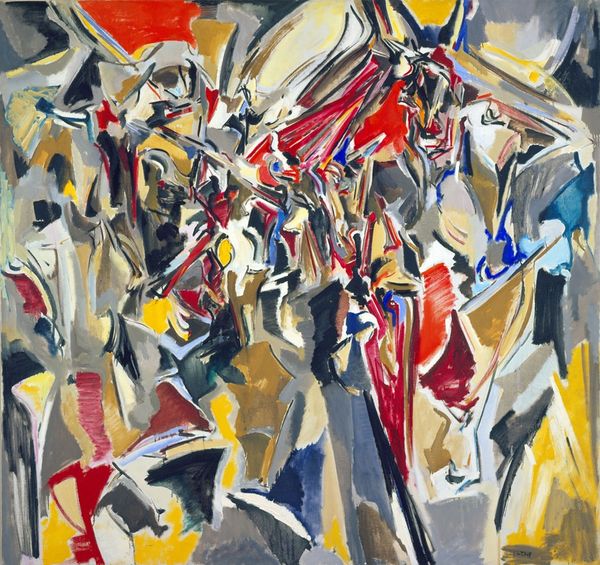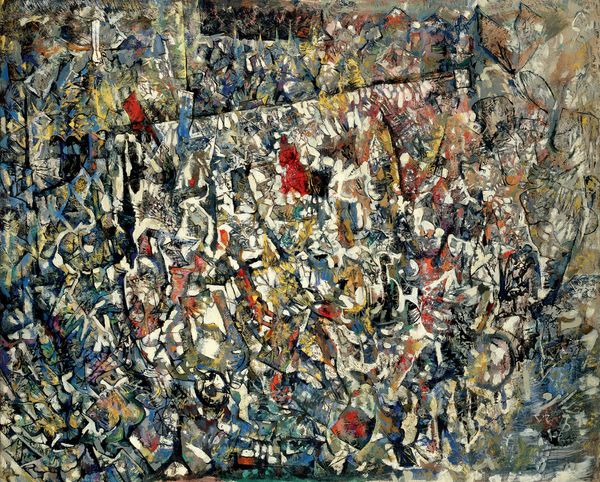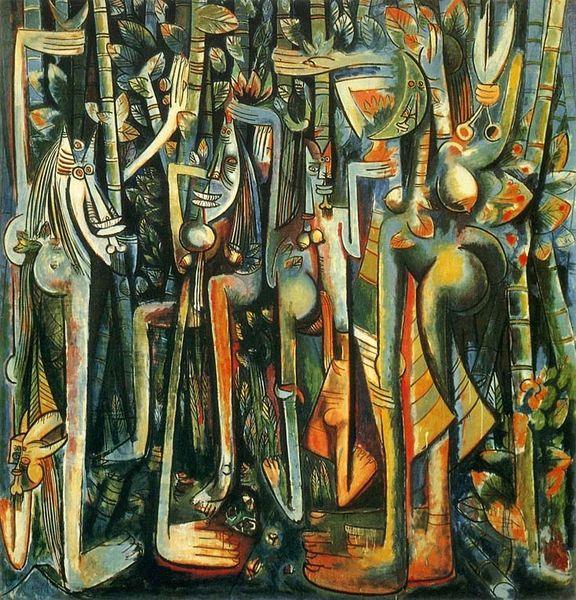
painting, oil-paint, textile, impasto
#
narrative-art
#
painting
#
oil-paint
#
textile
#
figuration
#
oil painting
#
impasto
#
geometric
#
expressionism
#
russian-avant-garde
#
expressionist
Dimensions: 106 x 100 cm
Copyright: Public domain
Curator: Standing before us is Pavel Filonov's "Fishing Schooner," an oil on canvas he completed in 1914. It’s a powerful piece, wouldn't you agree? Editor: Absolutely. My first impression is one of fragmented labor—the geometry and dynamic impasto communicate a fractured experience of work, almost like the disintegration of collective effort under industrial capitalism. It feels dissonant and even alienated. Curator: That resonates. Filonov was deeply interested in what he termed 'analytical realism,' an attempt to depict not just the outward appearance of things, but their inner essence, the atoms from which everything is constructed. Editor: Which could align to radical materialist ideas that are rooted in disintegration. The depiction of schooner as fragmented suggests it too, is subject to material reality as opposed to romantic notions of fishing or work, perhaps. Look at those almost pained faces in the bottom corner – do they connect to larger socio-economic realities of their time? Curator: Very possibly. The faces you are observing at the front draw heavily from icon painting. Notice how he breaks down each face into geometric facets and yet those angular forms coalesce into very traditional archetypes. These individuals symbolize certain immutable values or inner states, but ones distorted by their labour Editor: Absolutely, and by disrupting classical composition while maintaining those symbolical connections to past religious and community-driven structures of meaning making, Filonov emphasizes this dissonance of the new age – or in Russian history, the turn of the century, as some may argue Curator: Yes, Filonov presents an uneasy relationship with progress. It’s an attempt to see the modern world not just as a seamless surface but as a composite of elemental forms charged with energy and potential symbolism from centuries past. The canvas throbs with barely restrained vitalism. Editor: That vitalism comes at a cost. I keep returning to the color palette. It lacks cohesion and creates a subtle anxiety through disruption. Is the red the colour of blood due to manual labor, is the blue to reflect the alienation to water – these men look cut off, trapped in material production. Curator: The artist captures this feeling and gives his painting lasting meaning. It is more than a representation but, rather, he uses a combination of symbols to construct the sensation of these difficult themes that transcend the medium of expression. Editor: Definitely, looking at this painting, the "Fishing Schooner" isn't just about fishing; it's a fragmented, material depiction of early capitalism itself, laden with the historical consciousness and anxieties of his time. Thank you for unpacking it so powerfully. Curator: My pleasure, its nuances continue to capture the observer today with insight into these themes that still are pertinent, the visual language still rings true.
Comments
No comments
Be the first to comment and join the conversation on the ultimate creative platform.
